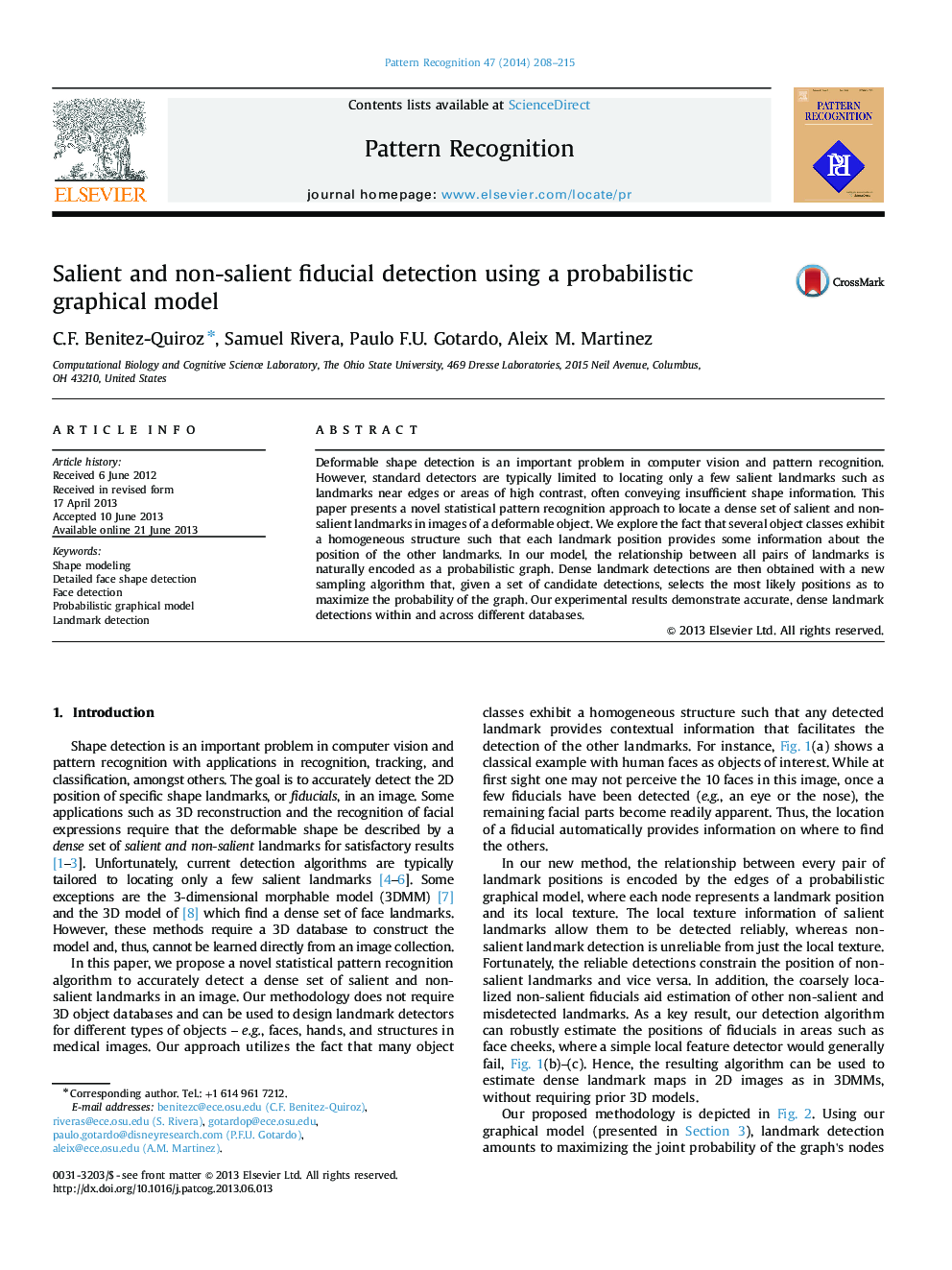| Article ID | Journal | Published Year | Pages | File Type |
|---|---|---|---|---|
| 532116 | Pattern Recognition | 2014 | 8 Pages |
•The new pattern recognition method accurately detects a dense set of object landmarks in an image.•The relative positions of pairs of landmarks are encoded by a probabilistic graph.•Non-salient landmarks, missed by other detectors, are now robustly detected.•It is applicable to different objects – e.g., faces, hands, and cardiac structures.
Deformable shape detection is an important problem in computer vision and pattern recognition. However, standard detectors are typically limited to locating only a few salient landmarks such as landmarks near edges or areas of high contrast, often conveying insufficient shape information. This paper presents a novel statistical pattern recognition approach to locate a dense set of salient and non-salient landmarks in images of a deformable object. We explore the fact that several object classes exhibit a homogeneous structure such that each landmark position provides some information about the position of the other landmarks. In our model, the relationship between all pairs of landmarks is naturally encoded as a probabilistic graph. Dense landmark detections are then obtained with a new sampling algorithm that, given a set of candidate detections, selects the most likely positions as to maximize the probability of the graph. Our experimental results demonstrate accurate, dense landmark detections within and across different databases.
